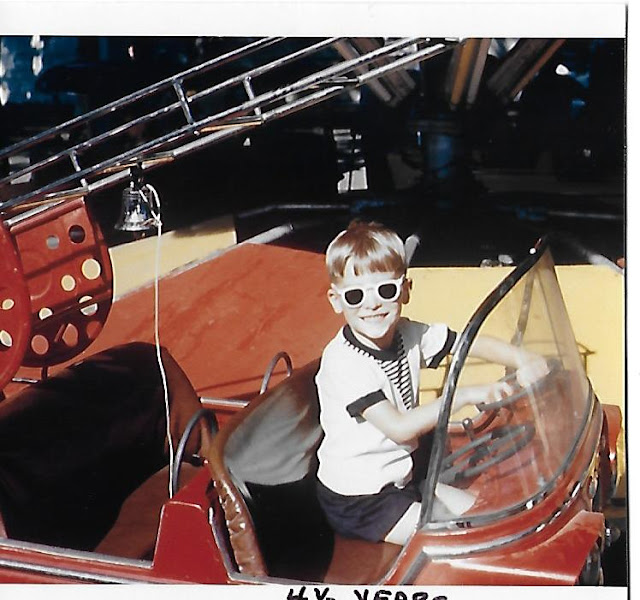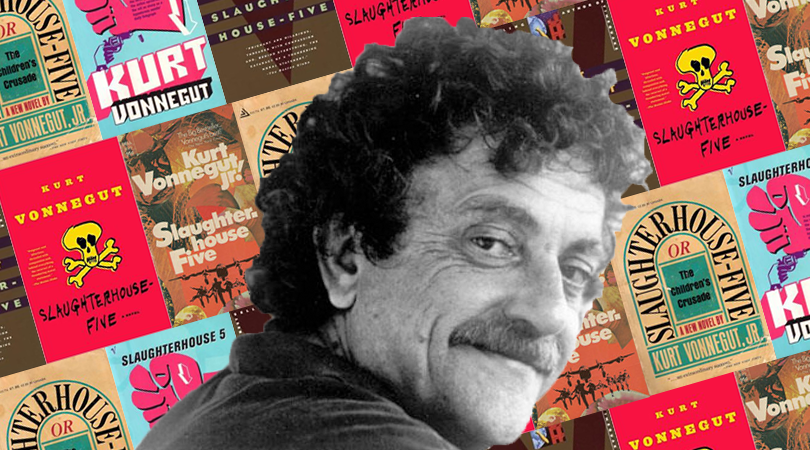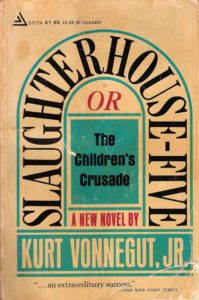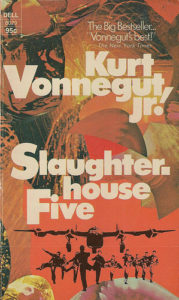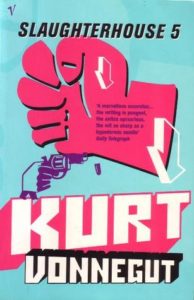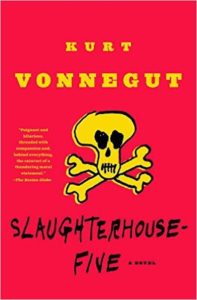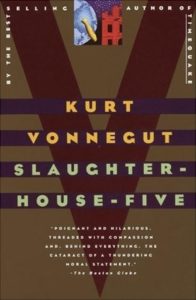Last day of May calls for a share.
I have been thinking a lot about Ursula K LeGuin lately. I need to reread some -- Earthsea and Left Hand of Darkness -- and read some of her work that I never got to before she died -- The Dispossessed.
But reflect on those words.
To be whole is to be part. Unity of self connects to the universe and everything, of which we are all a part but not the whole.
True voyage is return - our life journey returns us to the original source. It's the hero's journey. APOTHEOSIS.
Two shares. Enjoy.
https://vandanasingh.wordpress.com/2018/01/26/true-journey-is-return-a-tribute-to-ursula-k-le-guin/
http://rrhorton.blogspot.com/2018/01/true-journey-is-return-ursula-k-le-guin.html
from -
https://vandanasingh.wordpress.com/2018/01/26/true-journey-is-return-a-tribute-to-ursula-k-le-guin/
True Journey is Return: A Tribute to Ursula K. Le Guin
It is difficult to put into words what I am feeling at this moment, at the death of a great writer and a great human being. That Ursula K. Le Guin happened to have taken an interest in me and my work is part of why my grief is personal, but not entirely. She was a generous human being and a kind mentor who took interest in the works of multiple authors, so my story of our association is, I am sure, not unique, except, perhaps, in the particularities of the interaction. We met three times, (once for six whole days during a writing retreat), and we corresponded about a couple of times a year on average. But in my life she had a disproportionate effect, and it is safe to say that I would not be the writer or the person I am without the deep and abiding influence of who she was and what she wrote.
So what follows is an account made somewhat incoherent by the aftershocks of grief, for which I apologize in advance.
In the great six-book saga of Earthsea, which is to modern fantasy what, perhaps, the Mahabharata is to epic literature, there are many gifts for the reader. One of them is the landscape – so beautifully detailed in words and maps that it lives as vividly in my imagination as the great epics I first heard as a child. Another is that most of the characters in the books are brown – not in any overt way, but because it is, well, normal in that world. That representation matters can hardly be overstated – I am thinking of Nichelle Nichols, Lieutenant Uhura of Star Trek, and how she inspired generations of African Americans to take up science, and/or the pen. But unlike Star Trek, Le Guin went beyond tokenism to present genuinely different perspectives arising from different cultural moorings. Her upbringing as the daughter of one of America’s most famous anthropologists, Alfred Kroeber (an experience she recounts in fascinating detail in her essay collections), enabled her to be aware of the multiple ways different social groups structure themselves and their worlds. Eventually she was instrumental in bringing down the walls around the almost exclusively male, boys-with-toys shoot-em-up club that was golden age science fiction.
I didn’t discover her through the Earthsea series, however. I came to her work late, in my early thirties. I had always loved SF, having devoured, by the age of ten or eleven, Asimov, Clarke, a number of Hindi tall tales and some truly awful Tom Swift novels. Later, there was Bradbury’s Fahrenheit 451, which showed me that science fiction could be literature. But in my late teens I abandoned the genre for reasons that remained unclear to me for years.
My brother had been insisting for some years that I read a book called The Dispossessed by a writer called Ursula K. Le Guin. When I finally picked it up, I was a mother in my early thirties, living near Portland, Oregon, trying my hand for the first time at writing with a view to publication. I had always told stories, thanks to the vociferous demands of my younger sister when she was little, a skill I had already started practicing for my daughter. Science fiction seemed a natural fit for someone with a physics Ph.D., so I had returned to the genre, although with some trepidation. When I closed The Dispossessed with what must have been shaking fingers, a new universe lay open before me, and I was overcome by feelings I could not articulate. Soon after, I read the first three books of the Earthsea series. It gradually became clear to me that what I was feeling was a homecoming – that science fiction was my country too. That the futures, trajectories and philosophies imagined in the books of Asimov, for example, were not the only choices at hand. The possibilities were endless – not merely in terms of external markers like skin color, but in alternate ways of being, social relationships, worldviews. Here was the true revolutionary potential of imaginative fiction.
I was born in a free India, but the country was only 15 years free when I was born. I had the benefit of being raised in a family with an open intellectual tradition; I had relatives who had been freedom fighters, and my grandparents, parents, aunts and uncles encouraged us to ask questions and seek learning. I had grown up reading great Hindi writers like Premchand, who questioned social norms like caste and class. Later, in my teens I was part of an environmental justice action group in India that helped me see first-hand how the lives of the rural poor were intimately connected to the environment, and to state and social violence. In this context we were able to question the dominant paradigm of development. But I first became conscious of the need to decolonize that last frontier – the mind – while journeying through the worlds of Ursula Le Guin’s imagination.
I tell this story because I want to emphasize that Le Guin, by presenting worldviews, and indeed worlds, as constructs, provincialized the default Western traditions as merely one of many possibilities. Other writers had been dreaming up other planets and gadgets and gizmos since the birth of SF. But the heroes were for the most part, white and male, and they thought in ways that reflected the birth culture of their writers. Westerns in space. The language and plot lines of colonization. Even writers sympathetic to the fate of the colonized – I’m thinking of Ray Bradbury’s beautiful Martian Chronicles, a meditation on colonization – rendered their alien wives as one-dimensional servers of dinner and emotional support. What Le Guin did was to take down the walls around the imagination, and to set us all free. To shift the paradigms, the conceptual constructs by which we make sense of the world, is no small thing.
Soon after reading Le Guin, I had a chance to meet her at a writers’ conference in Portland. There was a mini writers’ workshop, conducted by her, Molly Gloss and Tony Wolk. She turned out to be a small, sprightly woman with an intensely intelligent, yet kindly gaze, and a rapier-sharp wit. Waving away our fannish adulations, she insisted we call her Ursula. After the workshop she encouraged me to write to her, and to apply to a writers’ retreat, Flight of the Mind, in the Oregon forest. She thought a writers’ critique group would help me, and Molly said she would introduce me to a friend of hers. So began my first writers’ group, and my journey as a writer.
I did go to Flight of the Mind in 1999, after we had moved away from Oregon. Six days with some sixty women, in the middle of the great temperate rainforests of Oregon was an unforgettable experience. I was one of twelve who had signed up with Ursula – we would walk across a bridge over the river to Ursula’s cottage, sit on the floor in a circle, and talk, and do writing. Gradually our awe at being in her presence gave way to ease. There was a lot of laughter. We wrote, critiqued, went for walks through the woods, and ate vast quantities of food. My memories of the time are filled with the sound of the river (a constant backdrop to our conversations) and an unforgettable trek through the woods with Ursula. The forests of Oregon are magical indeed – we discovered an enormous tree stump in the shape of a dragon during our wanderings. Ursula was our guide to this world – she knew the plants and the birds, and the huge, moss-covered trees.
Languishing in a suburban desert (literally and metaphorically) in Texas some years later, I had collected a few rejections, which, however personal and nicely worded, were still rejections. I was in a difficult personal situation, had been exiled from academia for almost a decade, and my family was thousands of miles away in India; my only joys were my daughter and writing. Perhaps it was time to give up writing for the world, and simply scribble for myself. In the midst of this crisis I gathered up my courage and wrote to Ursula. We had already exchanged a few letters by this point. I mentioned that I didn’t think I had it in me to be a writer – you know, the kind who writes for everyone, not just herself. Ursula asked me to send her a sample of my latest. So I did.
It was her crucial encouragement at this low point in my life that led to my first short story publication, followed by a children’s book that came out first in India and then the US (for which Ursula wrote a blurb) and ultimately a steady trickle of science fiction and fantasy short stories. Every once in a while Ursula would ask to read my latest publication, and send back comments and congratulations. For a great doyen of the field to take notice of an obscure Indian writer-wannabe in the vast sea of America was no small thing for the writer in question. Her loyalty to her craft was such that any praise given was praise earned, and her advice was always sound and to the point. I learned from her, for example, the importance of reading one’s work aloud, and how that enables one to become sensitive to the sound of language, to the rhythm and flow of sentences. Her fine book on the tools of writing, Steering the Craft, is one I still recommend to new writers.
Over the years my correspondence with Ursula shifted from paper to emails, Our exchanges, though infrequent, were always interesting. We talked about writing, but also about our mutual interest in non-human others. We talked at length about climate change (my academic work having moved to that area), the significance of the term Anthropocene (she had been invited to a conference on the subject by Donna Haraway), the meaning of happiness. We discussed the tendency of modern humans to succumb to the techno-fix, even for complex issues like climate change. I think it was clearer to her than to most people that technology by itself can never solve anything (it is more likely to create new problems) if the underlying paradigm remains unchanged. But also, modern technology can be a distraction and an addiction; that we have a lot to learn from indigenous peoples, and from other species, is apparent in her work, from essays to fiction. Probably one of her most underrated novellas is one called A Man of the People in the collection Four Ways to Forgiveness. Set on the world of Hain, which has the longest history and the greatest technological sophistication of any world in the galaxy of her imagination, it brings to life a pueblo culture that one might call low-tech despite the presence and availability of high-tech. To me this illustrates the possibility of technology arising from and serving the needs and values of the culture, rather than the other way around. We are so familiar with modern technology as the instrument of power, changing and arranging our lives without our participation and consent, that we can’t imagine what it would be like to not live this way. I think Ursula saw earlier than others the kinds of dangers that behemoths like Amazon and Google pose to the world – the arrival of the corpocracy and the undermining of democracy and the artistic imagination. Her fiery speech at the National Book Awards ceremony in 2014 is testimony to that. They must still be beating out the flames from the walls. “We live in capitalism. Its power seems inescapable. So did the divine right of kings. Any human power can be resisted and changed by human beings. Resistance and change often begin in art, and very often in our art, the art of words.”
As Timmi DuChamp notes in her tribute, Ursula Le Guin possessed a quality that places her among the greatest of writers and seers – a moral imagination.
I got to see Ursula for the third and last time in January 2014. I had gone up to Portland for an academic conference, and we had lunch, Molly and Ursula and I, at a very nice restaurant. We talked about everything in the universe and more. Later, we took pictures with my camera, but there was something wrong with it, so only one of the pictures materialized, a lovely one of Ursula and Molly. I remember us standing at the edge of the street in Portland; there was snow in the cracks on the sidewalk, a row of cars parallel-parked, and the bare-armed trees lining the narrow road. We were laughing in the afternoon light, saying goodbye, and the snow-topped visage of Mt. Hood was somewhere in the sky, although I can’t remember if it was visible from that particular street at that moment.
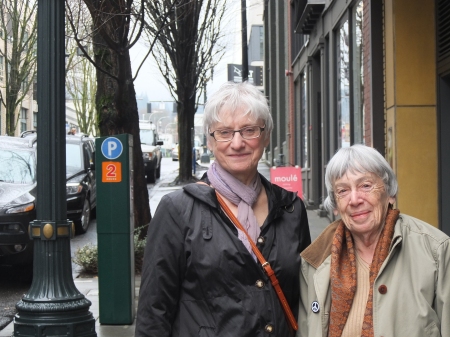
When, in 2015, the Science Fiction Research Association invited me to be one of their three keynote speakers, I chose to speak about the relevance of one of Ursula’s most famous short stories “The Ones Who Walk Away From Omelas.” I had a certain interpretation of it in the light of what I’d learned about climate change and the history of science, and I was nervous about revealing half-baked ideas before a bunch of literary scholars. I also wanted to end my talk with a wolf howl. So I emailed Ursula and aired my thoughts, which she validated and complicated for me. “Howl if you feel like it!” she wrote. She told me she had hooted like Great Horned Owls, in the Library of Congress. So, of course, I did.
The last time I heard from Ursula, last year, she hadn’t been very well; she said that she would not always be able to respond to my emails, but they were still welcome. During the year I sent a couple of missives. Then, on January 23, 2018, I heard the news of her passing the previous day.
In the Earthsea series, there are two great ruminations on death. The Farthest Shore is the first one, and the last book, The Other Wind is the second. In the Farthest Shore, Cob, an old mage who fears death, has made himself immortal, but only at the cost of life itself and the balance of the world. The hero Ged makes a great journey across the seas and islands of Earthsea, seeking the place from which to restore the balance. Eventually he and his companion find themselves in land of death – ‘the dry land,’ separated from the place of the living by a stone wall, where the stars never move and lovers pass each other like strangers in the streets. Here they find Cob, who declares that his body will not decay and die. Ged says to him: “A living body suffers pain, Cob; a living body grows old; it dies. Death is the price we pay for our life and for all life…. You sold the green earth and the sun and stars to save yourself.”
The struggle that ensues is not the stuff of sword-and-sorcery, but a struggle to overcome fear, to be complete in the world, to be free. By freeing Cob, at great cost to himself, Ged restores the balance of the world.
To me this is one of the finest illustrations of the power and relevance of imaginative literature. Consider our present world – the madness of the potentates, the corporate coup d’etat of nations worldwide, the taking apart of the planetary systems that sustain life on Earth. I wonder if behind all the machinations of the super-rich and the escapes and addictions and imperatives of modern industrial civilization – if behind all these phenomena lies a pathological fear of death, and of suffering. Death and suffering are fearsome indeed, but would you sell the green earth and the sun and the stars to be free of them?
In the last book of Earthsea, Le Guin returns to the land of death to unbuild the last wall. By the end of the book, the dead, condemned for so long to walk in a pale imitation of life endlessly through the streets of the dry land, are set free. They are free to be sunlight and leaves and water, to return to the great cycle, the dance of the cosmos.
I’m turning the pages of The Other Wind, trying to find the quote I am remembering, because my words fall short of what I want to say. In Tehanu’s words, then, near the end of the book –
“… when I die, I can breathe back the breath that made me live. I can give back to the world all that I didn’t do. All that I might have been and couldn’t do… to the lives that haven’t been lived yet. That will be my gift to the world that gave me the life I did live, the love I loved, the breath I breathed.”
Thank you, Ursula Aunty (as you used to sign your emails to me) for your gift to the world and to me. I will look for you in the sunlight and the wind, and in the faces of people at the next great uprising. See you on the Overfell, in Earthsea.
Running List of Links to Remembrances :
- Molly Gloss is interviewed and you can also hear some earlier recordings of Ursula here.
- A remembrance from Julie Philips, who is writing a biography of Ursula Le Guin, and who also wrote this article in 2016.
- I would add “Always Coming Home” to her essential novels, but this is a pretty good start.
- Matthew Cheney’s tribute.
- A tribute from Mary Anne Mohanraj, posted along with a number of other authors’ tributes at tor.com, extracted with permission:

I may have read everything Le Guin ever published. I certainly tried to. It seems greedy of me, given what a vast and rich compendium of work she gave us, to be bitter that there won’t be any more. And yet, here I am, greedy and bitter and bereft.
As a parent, there’s a little voice in the back of my head, any time I’m spending time with my children. The voice says, “You don’t know what’s going to stick, what little things you say or do, that will end up what they remember. Your words and actions constantly act to affect and shape their personality. Be aware.” I first encountered Le Guin’s work at a formative age, then revisited it over and over again. Ursula didn’t necessarily have the answers, but she kept asking, and kept me asking, all the right questions, all the hard questions. She shaped me as a person, as deeply as my own parents did.
The best tribute I can give Le Guin, as a writer, is to honor her teaching and be conscious of what messages I’m putting out into the world. Am I asking the hard questions? Are there hard questions I’m avoiding?
We sing rounds at the end of WisCon, after the SignOut that officially ends the con, just standing in a circle in the hallway on the second floor. We do it because we can’t bear for the Con to be over, because we are so sad to go. It’s become a tradition these last few years, singing ourselves out. People come and join us, both friends and strangers; people wander off again to collect suitcases and hugs.
We end with a round written by Benjamin Newman, set to words by Ursula. Singing helps the sadness, a little.
“Only in silence the word,
Only in dark the light,
Only in dying life:
Bright the hawk’s flight
On the empty sky.”
Only in dark the light,
Only in dying life:
Bright the hawk’s flight
On the empty sky.”
—“The Creation of Éa,” Ursula K. Le Guin
If you’re doing it as a round, the second voice comes in on ‘dark’.
—Mary Anne Mohanraj is the author of The Stars Change (among other titles), the founder of Strange Horizons, and director of the Speculative Literature Foundation.
- A tribute from Anil Menon that he posted in an unlinkable elsewhere, reproduced with permission:
One of the things that happened when I began to do writerly things is that I also began to meet those writers whose work had inspired me and helped shape my writing. At first, that was one of the best things about taking writing seriously.
But these encounters often turned out to be under-whelming, if not downright depressing. Then I’d remind myself that it’s always a bad idea to confuse a writer’s work with the writer. Actually, it is a terrible idea. Nevertheless, the temptation to do so is almost impossible to avoid. Sometimes such disappointments lead to a cynicism about art and artists. Other times it leads, as in my case, to a reluctance in meeting the people who created the work one loves.
So when I got the chance to spend some time with Ursula K. Le Guin (at the 2004 Worldcon, I think), I was really hesitant. I appreciated her kindness, of course. But I discovered it was more than kindness. As her readers will agree I think, Le Guin’s work radiates compassion. A compassion for the world as it is, but always informed by how it could be. But it didn’t stop there. By some quiet miracle, this writer could be confused with her work. In her presence, in conversing with her, it was possible to suspend the assumption that being and making were two different things. Ursula K. Le Guin embodied her work. Her work embodied her.
I suspect there was a lot more to Ursula K. Le Guin than this saintly halo I’ve thrust on her head. But I met her a few other times and though my understanding got more nuanced, I never saw any reason to fundamentally revise the original impression.
In any case, I don’t think there’s no real reason to mourn her passing. A cause for grief, yes. She’s dead, after all. But a reason to grieve? No. When we reach for her work, it is there we, her inheritors and beneficiaries, will always find her.
- A tribute from Nisi Shawl here – “But I keep turning to Ursula’s earlier, lesser-known words for comfort as I let go of my denial that this hero could die. They appear in her 2000 novel “The Telling,” in a passage where the heroine journeys to a landscape whose main feature is Mount Silong, a mountain so large that no one person alone can comprehend it:
How should we remember Ursula Kroeber Le Guin? Together.”
- An earlier article from The Nation about why we need Ursula Le Guin.
- Here is a tribute I wrote to Ursula on her 81st birthday back in 2010 on my blog.
http://rrhorton.blogspot.com/2018/01/true-journey-is-return-ursula-k-le-guin.html
+++++++++++++++++++++++++++++++++++++++++++++++++++++++++++++++++++++++
+++++++++++++++++++++++++++++++++++++++++++++++++++++++++++++++++++++++
+++++++++++++++++++++++++++++++++++++++++++++++++++++++++++++++++++++++
- Bloggery committed by chris tower - 1905.31 - 10:10
- Days ago = 1427 days ago
- New note - On 1807.06, I ceased daily transmission of my Hey Mom feature after three years of daily conversations. I plan to continue Hey Mom posts at least twice per week but will continue to post the days since ("Days Ago") count on my blog each day. The blog entry numbering in the title has changed to reflect total Sense of Doubt posts since I began the blog on 0705.04, which include Hey Mom posts, Daily Bowie posts, and Sense of Doubt posts. Hey Mom posts will still be numbered sequentially. New Hey Mom posts will use the same format as all the other Hey Mom posts; all other posts will feature this format seen here.


